Argentina
Welcome to Argentina
Argentina, a vast and vibrant country located in the southern part of South America, offers an extraordinary blend of natural wonders, rich culture, and dynamic cities. From the bustling streets of Buenos Aires to the breathtaking landscapes of Patagonia, Argentina invites travelers to explore its diverse regions, indulge in world-famous cuisine, and immerse themselves in a unique cultural experience. Whether you are drawn by the tango rhythms, the majestic Andes mountains, or the expansive pampas, Argentina promises an unforgettable adventure in 2025.
Stretching over 3,650 kilometers from the subtropical north to the windswept southern tip of Tierra del Fuego, Argentina is South America’s second-largest country. Its geography is incredibly diverse, featuring everything from snow-capped peaks and glaciers to lush rainforests, arid deserts, and fertile vineyards. The country’s population is concentrated in urban centers like Buenos Aires, Córdoba, and Rosario, but much of its charm lies in the vast open spaces and small towns that dot the landscape.
Buenos Aires, often called the "Paris of South America," is known for its European-style architecture, vibrant arts scene, and passionate tango culture. Beyond the capital, visitors can explore natural wonders such as Iguazú Falls in the north, the wine country of Mendoza, the stunning Lake District around Bariloche, and the wild beauty of Patagonia with its glaciers and national parks.
Argentina’s culture is a rich tapestry influenced by indigenous peoples, Spanish colonization, and waves of European immigration, especially Italian and Spanish. This cultural fusion is evident in the language, cuisine, music, and everyday life. Argentine Spanish, or Castellano, has a distinctive rhythm and melody shaped by Italian heritage, making it uniquely captivating to hear and learn.
Why Visit Argentina?
1.
Diverse Landscapes and Natural Wonders: Argentina offers some of the most spectacular natural scenery on the planet. From the thunderous Iguazú Falls to the towering peaks of the Andes, the vast glaciers of Patagonia, and the colorful hills of Quebrada de Humahuaca, the country is a paradise for nature lovers and adventure seekers.
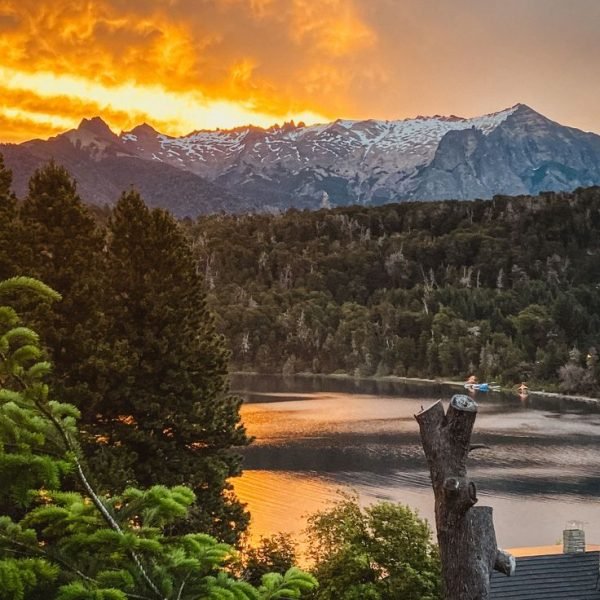
2.
Rich Culture and Warm Hospitality: Argentina’s cultural life is vibrant and inviting. Experience the passionate tango dance in Buenos Aires, savor world-renowned Argentine beef at traditional parrillas (steakhouses), and enjoy the relaxed pace of life with locals who value connection and conversation, especially during the traditional sobremesa—the leisurely chat after meals.
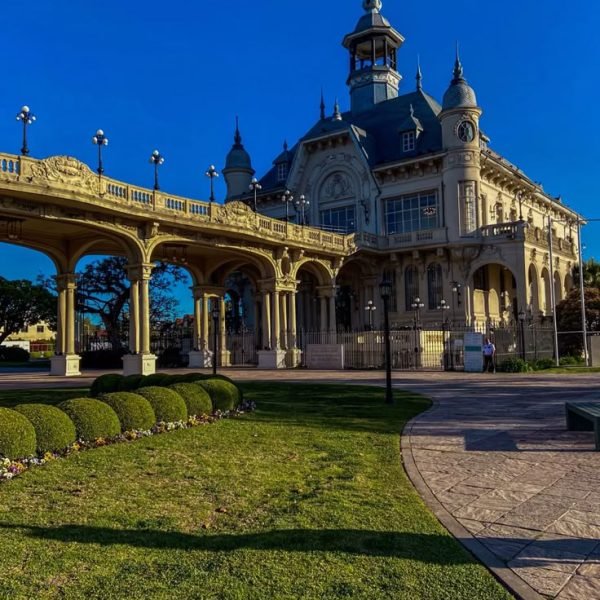
Planning Your Trip
Visa Information
Travelers planning to visit Argentina in 2025 should check visa requirements based on their nationality. Many countries’ citizens can enter Argentina visa-free for tourism purposes, but some will need to apply for a tourist visa. The visa application typically requires:
- A completed and signed visa application form.
- A recent passport-style photo.
- A passport valid for at least six months beyond the entry date.
- Proof of sufficient financial means, such as recent bank statements or employment letters.
- Round-trip airfare reservations.
- Hotel bookings or a letter of invitation if staying with friends or family.
- A consular interview may be required.
It is advisable not to purchase airline tickets until the visa has been granted. Additional documentation may be requested by the Argentine consulate during the application process.
Best Time to Visit
Argentina’s vast size means the climate varies significantly by region, so the best time to visit depends on your destinations and activities. Generally:
- Spring (October to mid-December) and Fall (April to mid-June) are considered the best overall times to visit, offering mild temperatures, blooming jacaranda trees in Buenos Aires, and beautiful autumn colors in Patagonia.
- Summer (December to March) is warmest, ideal for visiting Patagonia and the Lake District but can be hot in Buenos Aires and northern areas.
- Winter (June to August) is cold in the south and Andes regions, with some outdoor activities limited, but it’s a good time for visiting northern areas like Salta.
For Patagonia, the best period is from mid-September to mid-April when trekking and outdoor activities are most accessible. For the central and northern regions, shoulder seasons in spring and fall provide pleasant weather and fewer tourists.
Getting To and Around
Getting to Argentina
The primary international gateway is Buenos Aires’ Ministro Pistarini International Airport (Ezeiza), which receives flights from major cities worldwide. Other international airports include those in Córdoba, Mendoza, and Rosario.
Getting Around
Given Argentina’s size, travel within the country requires some planning:
- Air Travel: Flying is the fastest way to cover long distances between major cities and regions. Argentina has many domestic airports served by various airlines. Prices and policies may vary for locals and foreigners.
- Buses: Long-distance buses are popular, comfortable, and affordable, often including food service. They connect most cities and towns and are a great way to experience the country on a budget. Local buses, called colectivos or micros, operate within cities and can be flagged down anywhere.
- Trains: While not the most efficient for long-distance travel, trains offer a nostalgic and sociable experience. Tourist trains like the “Train to the Clouds” near Salta and the “End of the World Train” in Ushuaia provide scenic journeys.
- Taxis and Remises: Taxis are inexpensive in cities, and remises (unmarked radio taxis) offer fixed fares. For groups, hiring a taxi or remise for the day is convenient, but always agree on the price beforehand.
- Car Rental: Renting a car is possible in most cities, though rates can be high. An international driver’s license, passport, and credit card are required. Inform the rental company if you plan to cross borders by car.
In summary, Argentina in 2025 offers travelers an exciting mix of natural beauty, cultural richness, and warm hospitality. Whether you’re exploring cosmopolitan Buenos Aires, trekking in Patagonia, or savoring Malbec wine in Mendoza, careful planning will help you make the most of your journey through this captivating South American country.
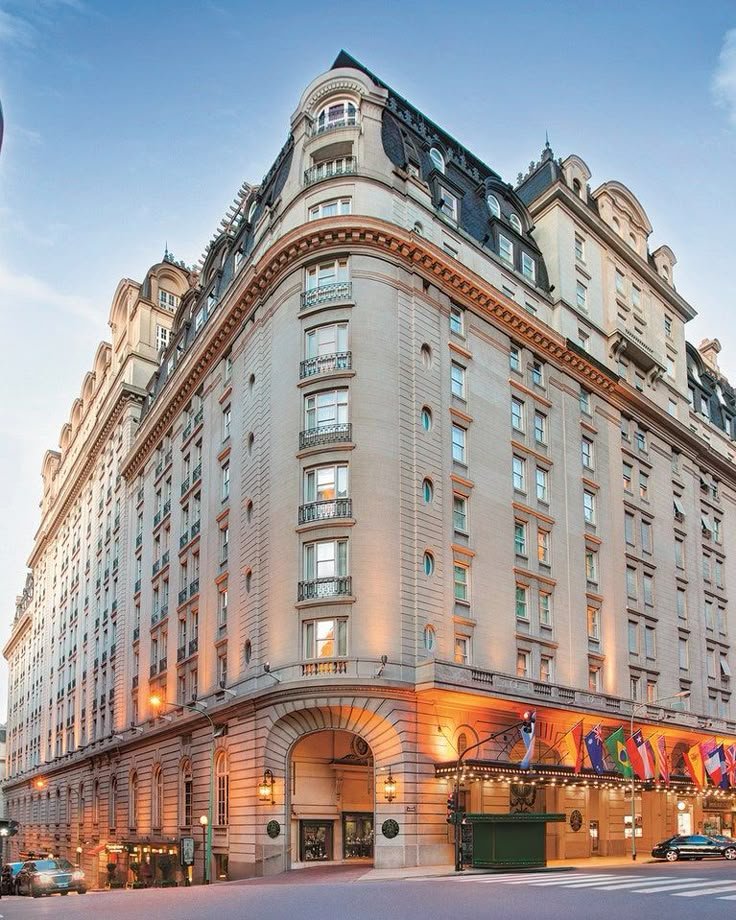
Accommodation
Argentina offers an extensive range of accommodation options catering to all types of travelers, from luxury seekers to budget adventurers. Whether you prefer to stay in cosmopolitan hotels in Buenos Aires, rustic estancias on the pampas, cozy hostels in Patagonia, or charming boutique lodges near Iguazú Falls, you will find something to suit your taste and budget.
Luxury Hotels and Resorts
For travelers seeking comfort and top-tier amenities, Argentina boasts several world-class hotels. Notable among these are the Gran Meliá Iguazú, located within Iguazú National Park, which offers stunning views of the falls from its rooms and rooftop bar, blending modern luxury with natural beauty. In Buenos Aires, the Esplendor by Wyndham Buenos Aires Tango provides elegant rooms with an old-world charm combined with modern conveniences, including a rooftop pool and attentive service. Other prestigious options include the Llao Llao Resort in Bariloche, known for its spectacular lake and mountain views, and the Park Hyatt Mendoza, ideal for wine country visitors wanting refined comfort.
Many of these hotels include breakfast and feature amenities such as pools, spas, fitness centers, and fine dining restaurants. New additions like the Sheraton Buenos Aires Greenville Polo and Resort, which opened recently, add to the luxury offerings with extensive facilities and a prime location for polo enthusiasts.
Mid-Range and Boutique Hotels
Argentina’s mid-range hotels often offer a blend of comfort, style, and excellent locations. Boutique hotels in neighborhoods like Palermo and Recoleta in Buenos Aires provide a more intimate experience with personalized service, stylish décor, and easy access to cultural attractions, restaurants, and nightlife. Many of these hotels offer free Wi-Fi, rooftop terraces, and breakfast included in the price.
Budget Accommodation and Hostels
For budget travelers, Argentina has a robust network of hostels, known locally as albergues juveniles, especially in popular tourist hubs such as Buenos Aires, Mendoza, and Salta. These hostels range from basic dormitory-style accommodations to more upscale options with private rooms, swimming pools, communal kitchens, and social spaces. Many are affiliated with international hostel networks, ensuring a clean and safe environment.
In addition to hostels, residenciales and hospedajes provide affordable lodging with private rooms and bathrooms, often run by local families. These can be an excellent way to experience Argentine hospitality and save money, especially in smaller towns or less touristy areas.
Alternative Lodging
Airbnb and vacation rentals have grown significantly in Argentina, particularly in Buenos Aires, offering apartments and houses that provide a home-like atmosphere, often with kitchens and laundry facilities. This is ideal for longer stays or families seeking more space and flexibility.
Camping and eco-lodges are also popular in Patagonia and other natural areas, catering to travelers who want to immerse themselves in the outdoors. Some estancias (ranches) offer accommodation combined with activities like horseback riding and hiking, providing a unique cultural experience.

Food and Drink
Argentina’s culinary scene is a vibrant reflection of its diverse cultural heritage and rich agricultural resources. Food is central to Argentine life, and sharing meals is a cherished social ritual. From world-famous beef to regional specialties and fine wines, the country offers a gastronomic adventure for every palate.
Argentine Cuisine Highlights
- Asado (Barbecue): The quintessential Argentine meal, asado is a social event centered around grilling various cuts of beef, pork, chicken, and sausages over an open flame or charcoal grill called a parrilla. The meat is often simply seasoned with salt to highlight its natural flavors. Typical accompaniments include chimichurri sauce, salads, and crusty bread. Asados are enjoyed throughout the country and are a must-try experience.
- Empanadas: These savory pastries are filled with a variety of ingredients such as beef, chicken, ham and cheese, or corn. Each region has its own style, with differences in dough thickness, fillings, and spices. Empanadas are popular snacks or appetizers and can be found in bakeries, markets, and restaurants.
- Milanesa: Similar to a breaded cutlet, milanesa is made from thin slices of beef or chicken, breaded and fried until golden. It is often served with mashed potatoes or in a sandwich called milanesa al pan.
- Dulce de Leche: This sweet caramel-like spread made from condensed milk is a staple in Argentine desserts. It is used in cakes, pancakes (panqueques), ice cream, and the famous alfajores—soft cookies sandwiching dulce de leche and coated in chocolate or powdered sugar.
Regional Specialties
- Patagonian Lamb: In southern Argentina, lamb roasted over an open fire is a delicacy, often accompanied by local herbs and vegetables.
- Northern Flavors: The northwest region offers dishes influenced by indigenous and Andean traditions, such as humita (corn pudding), locro (a hearty stew), and spicy sauces.
- Seafood: Along the Atlantic coast, especially in Mar del Plata and Puerto Madryn, fresh seafood including hake, squid, and shellfish is widely enjoyed.
Beverages
- Wine: Argentina is renowned for its Malbec wines, primarily produced in the Mendoza region. The country also produces excellent Cabernet Sauvignon, Torrontés (a fragrant white wine), and sparkling wines. Wine tasting tours and vineyard visits are popular activities for travelers.
- Mate: The traditional herbal infusion made from yerba mate leaves is deeply embedded in Argentine culture. Shared socially from a gourd with a metal straw (bombilla), mate is consumed throughout the day and symbolizes friendship and hospitality.
- Coffee and Dulce de Leche: Coffee culture is strong in urban areas, where cafés serve espresso and cortado (espresso with a splash of milk), often enjoyed with pastries or dulce de leche treats.
Dining Out
Argentina offers a wide range of dining options, from casual parrillas and street food stalls to elegant restaurants. Buenos Aires, in particular, boasts a thriving gastronomic scene with international influences and innovative chefs. Typical dining hours are later than in many countries, with lunch around 1–3 pm and dinner from 9 pm onwards.
Tips for Food Travelers
- Try to experience an authentic asado, either at a local restaurant or, if possible, invited by locals.
- Explore regional markets and street food for fresh, affordable, and traditional flavors.
- Don’t miss sampling Argentine ice cream (helado), which is creamy and often made with dulce de leche.
- When ordering wine, ask for local varieties and vintages to enhance your culinary experience.

Must-See Attractions
- Iguazú Falls
Arguably Argentina’s most famous natural wonder, Iguazú Falls is a spectacular collection of around 275 waterfalls stretching nearly 3 kilometers along the border with Brazil. The sheer power and scale of the falls are awe-inspiring, especially at the Devil’s Throat, a massive semicircular cascade plunging 80 meters down. Visitors can explore an extensive network of catwalks and trails within Iguazú National Park, allowing close-up views of the falls and the surrounding lush rainforest teeming with exotic wildlife. The Argentine side offers intimate encounters with the falls, while a short trip across the border to Brazil provides panoramic vistas of the entire waterfall system. - Buenos Aires
Argentina’s capital is a cosmopolitan city blending European elegance with Latin American passion. Key sights include the iconic Obelisco, the historic Plaza de Mayo with the presidential Casa Rosada, and the colorful La Boca neighborhood famous for its vibrant street art and tango dancers. Don’t miss the Teatro Colón, one of the world’s finest opera houses, and Recoleta Cemetery, where Eva Perón is buried. Palermo’s parks and trendy cafes offer a modern vibe, while San Telmo’s cobblestone streets preserve the city’s colonial charm. Buenos Aires is also a culinary hotspot, renowned for its parrillas (steakhouses) and lively nightlife. - Perito Moreno Glacier
Located in Los Glaciares National Park in Patagonia, the Perito Moreno Glacier is a massive, advancing ice field that periodically calves huge chunks of ice into Lago Argentino with thunderous crashes. Visitors can walk on specially built viewing platforms or take boat tours for close views of the glacier’s towering blue walls. For the adventurous, guided ice trekking is available on the glacier’s surface. This natural spectacle is one of the few glaciers worldwide that is not retreating, making it a unique and dynamic attraction. - Bariloche and the Lake District
Nestled in the foothills of the Andes, San Carlos de Bariloche is famous for its alpine architecture, chocolate shops, and stunning lakes surrounded by snow-capped mountains. The Nahuel Huapi National Park offers hiking, fishing, and skiing in winter. The area’s scenic Circuito Chico drive showcases panoramic views, waterfalls, and quaint villages. Bariloche is a gateway to outdoor adventure and a favorite destination for nature lovers. - Peninsula Valdés
A UNESCO World Heritage site on Argentina’s Atlantic coast, Peninsula Valdés is a wildlife sanctuary where visitors can observe southern right whales, sea lions, elephant seals, Magellanic penguins, and orcas in their natural habitat. The region is ideal for eco-tourism, with guided tours focusing on marine and birdlife, making it a must-visit for wildlife enthusiasts. - Mendoza Wine Region
At the foothills of the Andes, Mendoza is Argentina’s premier wine-producing region, famous for its Malbec. Visitors can tour vineyards and wineries, enjoy tastings, and dine at gourmet restaurants with stunning mountain backdrops. The nearby Uco Valley offers boutique wineries and luxury lodges, perfect for food and wine lovers seeking a refined experience. - Tierra del Fuego and Ushuaia
Known as “the end of the world,” Ushuaia is the southernmost city on the planet and a gateway to Antarctica. Nearby Tierra del Fuego National Park features rugged landscapes, forests, and coastal trails. Boat tours on the Beagle Channel offer sightings of sea lions, cormorants, and the iconic Les Eclaireurs Lighthouse. This remote region combines adventure and natural beauty in a truly unique setting. - Salinas Grandes Salt Flats
Located in the northwest, the vast white salt flats of Salinas Grandes create surreal landscapes that feel otherworldly. Visitors can take guided tours to learn about salt harvesting and enjoy striking photo opportunities against the endless white plains and blue skies.
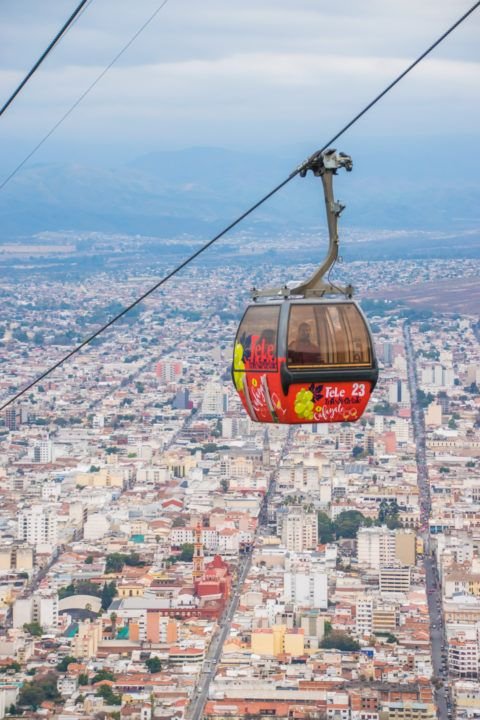
Must-Do Activities
- Experience a Traditional Argentine Asado
No visit to Argentina is complete without indulging in an asado, the country’s legendary barbecue. This social event centers around grilling premium cuts of beef, sausages, and other meats over an open flame. Many parrillas (steakhouses) in Buenos Aires and beyond offer authentic asado experiences, often accompanied by chimichurri sauce and local wines. For a more immersive experience, consider visiting an estancia (ranch) where you can participate in a traditional asado with gauchos and learn about rural life. - Tango in Buenos Aires
Tango is Argentina’s passionate and sensual dance, born in the working-class neighborhoods of Buenos Aires. Visitors can watch professional tango shows in theaters or milongas (dance halls), and many places offer beginner lessons. Walking through San Telmo or La Boca, you might even catch impromptu street performances. Embracing tango culture is a must for understanding the soul of the city. - Trekking and Outdoor Adventures in Patagonia
Patagonia offers some of the world’s best trekking opportunities. Popular trails include the W Trek in Torres del Paine (Chile, but accessible from Argentina), hikes around Fitz Roy and Cerro Torre near El Chaltén, and routes in Los Glaciares National Park. Activities like horseback riding, kayaking, and glacier trekking are also widely available. The region’s dramatic landscapes of mountains, glaciers, and lakes make every outdoor activity unforgettable. - Explore Iguazú National Park
Beyond viewing the falls, visitors can hike jungle trails, take boat rides under the cascades, and visit the nearby Guira Oga wildlife refuge. Birdwatching is excellent here, with toucans, parrots, and hummingbirds abundant. The park’s biodiversity and well-maintained infrastructure make it ideal for eco-tourism and nature photography. - Wine Tasting and Vineyard Tours in Mendoza
Spend a day or two touring Mendoza’s vineyards, sampling Malbec and other varietals, and learning about winemaking processes. Many wineries offer gourmet lunches paired with their wines. For a special treat, book a stay at a vineyard lodge or take a bike tour through the vineyards for a scenic and active experience. - Visit Historic and Cultural Sites in Buenos Aires
Take guided walking tours of Buenos Aires’ historic neighborhoods like San Telmo and Recoleta. Visit museums such as the MALBA (Latin American Art Museum of Buenos Aires) and the Evita Museum. Don’t miss the chance to see a performance at Teatro Colón or explore the vibrant street art scene. Sampling local cafés and markets adds to the cultural immersion. - Wildlife Watching at Peninsula Valdés
Join guided boat tours or land safaris to observe whales, penguins, and seals. The best time for whale watching is from June to December. The area’s rich biodiversity and conservation efforts provide a rewarding experience for nature lovers. - Discover the Andes Mountains
Whether skiing in winter near Bariloche, hiking in the summer, or exploring quaint mountain towns like San Martín de los Andes, the Andes offer endless outdoor activities. Adventure seekers can try rock climbing, white-water rafting, or paragliding in various locations along the mountain range.
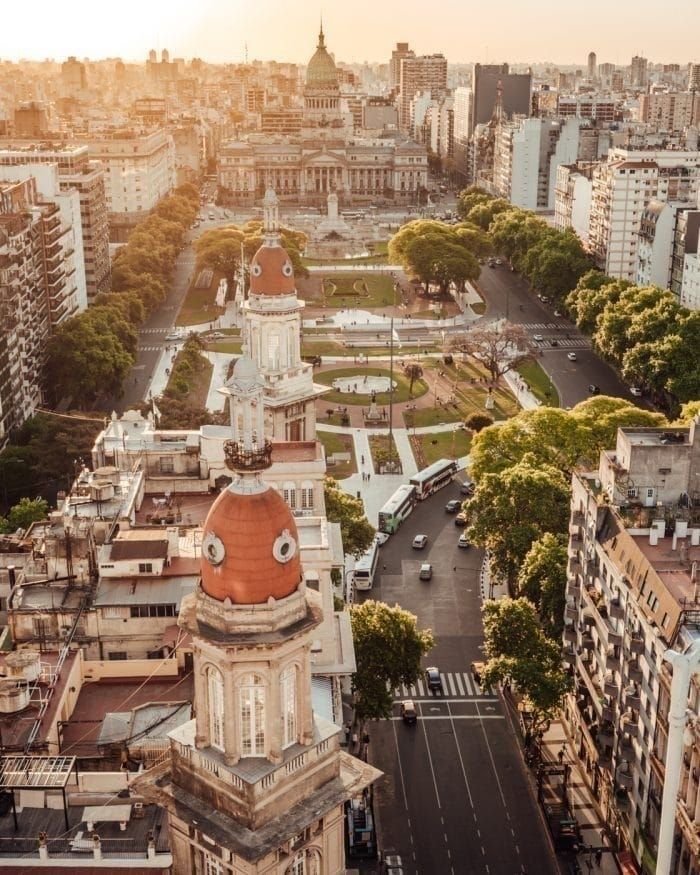
Travel Tips
Argentina is a captivating destination with its rich culture, stunning landscapes, and warm people. However, like any country, it requires some preparation and awareness to ensure a safe and enjoyable trip. Here’s a comprehensive guide to help you navigate Argentina confidently in 2025, covering essential safety advice, local customs, and language tips.
Safety Advice
Be Vigilant in Urban Areas
While Argentina is generally safe for tourists, petty crime such as pickpocketing, bag snatching, and occasional scams can occur, especially in larger cities like Buenos Aires, Córdoba, and Mendoza. Tourist hotspots such as La Boca, San Telmo, Retiro, and Florida Street in Buenos Aires are known for higher crime rates. Avoid wandering off main streets in these neighborhoods, especially after dark, and keep your belongings close at all times.
Protect Your Valuables
- Carry a photocopy of your passport’s photo page instead of the original, which should be stored securely in your hotel safe.
- Use a money belt or hidden pouch for cash and important documents.
- Distribute your money and cards in different pockets or bags to minimize loss if targeted.
- Wear backpacks on your front in crowded places and public transport to deter thieves.
- Avoid displaying expensive electronics, flashy phones, or camera gear openly, as these can attract unwanted attention.
Public Transport Caution
When using buses or subways, avoid sitting next to windows or exit doors to reduce the risk of snatch-and-run robberies. Be alert when boarding and disembarking, as buses often do not stop fully at curbs, requiring quick movements. Use ride-hailing apps like Uber or Cabify, especially at night, instead of hailing street taxis.
Avoid Vulnerable Areas
Steer clear of villas miseria (shantytowns) and economically vulnerable neighborhoods, which can be dangerous even if they are near tourist zones. Border areas near Brazil and Paraguay around Iguazú Falls also have increased crime risks and should only be visited during daytime with reputable guides.
Stay Informed and Prepared
- Register with your embassy or consulate upon arrival for updates and emergency assistance.
- Download Argentina’s National Meteorological Service app for weather alerts, especially if visiting Patagonia or the Andes where conditions can change rapidly.
- Carry a basic first aid kit and ensure you have travel insurance covering medical emergencies and evacuation.
- If trekking in remote areas, bring a GPS emergency locator and inform someone of your plans.
Women Travelers
Women should exercise medium-level caution, especially when traveling alone. Avoid isolated areas, be wary of dating app scams, and prefer group tours or guided excursions in remote regions.
Health and Water Safety
Tap water in major cities like Buenos Aires is generally safe to drink, but in rural or remote areas, it is safer to rely on bottled or filtered water. Altitude sickness can affect travelers visiting high elevations in the Andes; allow time to acclimate and consult a doctor if planning strenuous hikes.
Local Customs
Greetings and Social Etiquette
Argentines are warm and expressive. A common greeting among friends and acquaintances is a single kiss on the right cheek. When meeting formally, a firm handshake and direct eye contact are customary. Use polite titles such as Señor or Señora followed by the last name unless invited to use first names.
Dining and Socializing
Meals are social events. Dinner usually starts late, around 9 or 10 pm. Argentines enjoy sobremesa, the tradition of lingering at the table after eating to chat and savor the moment. If invited to an Argentine home, it’s polite to bring a small gift such as wine or sweets.
Tipping
Tipping is customary but not obligatory. In restaurants, leaving around 10% of the bill is appreciated if service is good. Taxi drivers and hotel staff also appreciate small tips.
Body Language and Gestures
Avoid using the “OK” hand sign or thumbs-up gesture, as these can be offensive in Argentina. Instead, a nod or verbal affirmation is preferred. Argentines are generally expressive with their hands but respectful of personal space.
Punctuality
Social events often start later than scheduled, but business meetings tend to be more punctual. It’s polite to arrive a few minutes late for social gatherings but on time for professional appointments.
Language Basics
Spanish is the Official Language
Argentine Spanish, or Castellano, has a distinctive accent influenced by Italian intonation and vocabulary. The vos form replaces tú for informal “you,” which can be confusing for Spanish learners at first.
Common Phrases to Know
- Hola (Hello)
- Por favor (Please)
- Gracias (Thank you)
- ¿Cuánto cuesta? (How much does it cost?)
- ¿Dónde está el baño? (Where is the bathroom?)
- No hablo mucho español (I don’t speak much Spanish)
- ¿Habla inglés? (Do you speak English?)
Pronunciation Tips
The “ll” and “y” sounds are pronounced like the English “sh” in many parts of Argentina (e.g., calle sounds like “cashe”). Argentines speak quickly and use local slang (lunfardo), so patience and a friendly attitude go a long way.
Avoid Misunderstandings
- The word che is a casual interjection used to get someone’s attention or as a friendly address, similar to “hey.”
- Be cautious with gestures; for example, the thumbs-up sign can be rude.
- Argentines appreciate when visitors make an effort to speak Spanish, even if imperfectly.
Final Tips for a Smooth Journey
Additional Practical Tips
- Money and Currency: Argentina’s economy is cash-oriented. Use official exchange houses or banks rather than street exchangers (arbolitos), and carry small bills for convenience. Credit cards are widely accepted in cities but less so in rural areas.
- Driving: If you plan to rent a car, an International Driving Permit is recommended. Be aware that toll roads require cash payment, and driving styles can be aggressive.
- Emergency Numbers: Dial 911 for police, fire, or medical emergencies. Buenos Aires and other major cities have Tourism Police to assist visitors.
- Internet and Connectivity: Wi-Fi is common in hotels, cafes, and restaurants in urban areas but less reliable in remote regions. Consider purchasing a local SIM card for better coverage.
By following these travel tips, respecting local customs, and learning some basic Spanish, your trip to Argentina in 2025 will be safer, smoother, and far more rewarding. Embrace the warmth of the people, the richness of the culture, and the breathtaking landscapes with confidence and curiosity. Safe travels!

